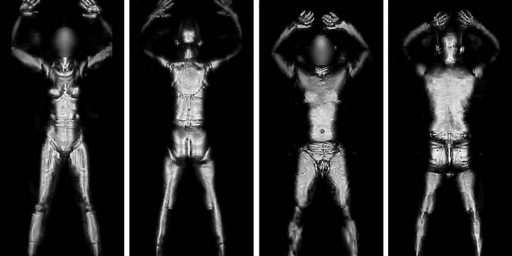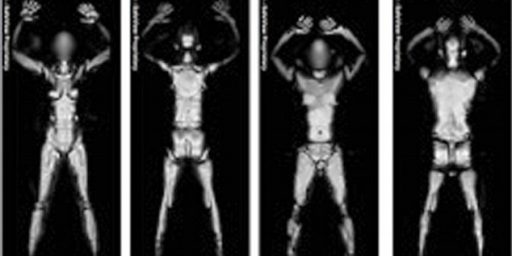Body Scanners on Trains, Boats, and Subways?
Looking to avoid airport body scanners? You might not be able to do it on any form of public transit if Janet Napolitano gets her way.
Looking to avoid airport body scanners? You might not be able to do it on any form of public transit if Janet Napolitano gets her way, Jordy Yager reports for The Hill.
The next step in tightened security could be on U.S. public transportation, trains and boats.
Homeland Security Secretary Janet Napolitano says terrorists will continue to look for U.S. vulnerabilities, making tighter security standards necessary. “[Terrorists] are going to continue to probe the system and try to find a way through,” Napolitano said in an interview that aired Monday night on “Charlie Rose.” “I think the tighter we get on aviation, we have to also be thinking now about going on to mass transit or to trains or maritime. So, what do we need to be doing to strengthen our protections there?”
Napolitano’s comments, made a day before one of the nation’s busiest travel days, come in the wake of a public outcry over newly implemented airport screening measures that have been criticized for being too invasive.
The secretary has defended the new screening methods, which include advanced imaging systems and pat-downs, as necessary to stopping terrorists. During the interview with Rose, Napolitano said her agency is now looking into ways to make other popular means of travel safer for passengers and commuters.
Napolitano isn’t the only one who’s suggested that advanced scanning machines could be used in places beyond airports. Sen. Joe Lieberman (I-Conn.), chairman of the Senate Homeland Security Committee, introduced legislation this past September that would authorize testing of body scanners at some federal buildings.
Napolitano’s comments were in response to the question: “What will they [terrorists] be thinking in the future?” She gave no details about how soon the public could see changes in security or about what additional safety measures the DHS was entertaining.
Now, as a practical matter, Napolitano is likely right. Terrorists are naturally going to look for softer targets and al Qaeda has already attacked trains and subways elsewhere. But, sheesh, with the administration already taking flak for using these devices in airports — where public support for security is naturally higher, owing to the 9/11 attacks — you’d think they’d avoid talking about using them elsewhere. The tone deafness on this issue continues.






They’re in a bind. If they insist on these measures and an attack happens, they’re going to get blamed. If they relax the pornoscanner/groping and a plane is downed, the right will go nuts and try to impeach Obama. It’s really a no-win situation.
The bottlenecks created by all of this security create large groups of relatively static bodies. These kinds of bottlenecks were effectively exploited by the Serbs to terrorize Bosnians during the war in Bosnia and Herzegovina. What happens when everyone is scared to wait in security lines? Remember what Ben Franklin said, “They who can give up essential liberty to obtain a little temporary safety, deserve neither liberty nor safety “. These “safety” measures do not really make us safe in the long run, but they do make us a little less free in tiny, easy to swallow increments.
Yep, it sure does.